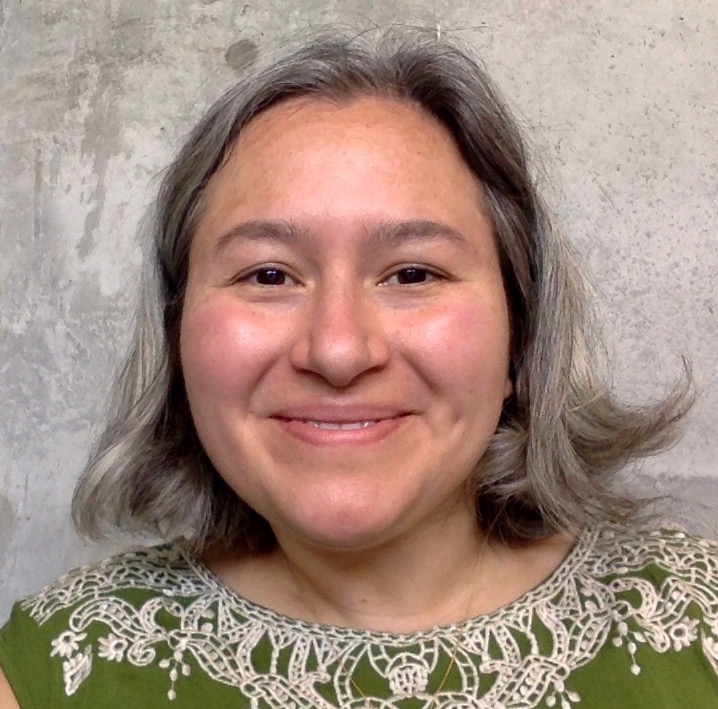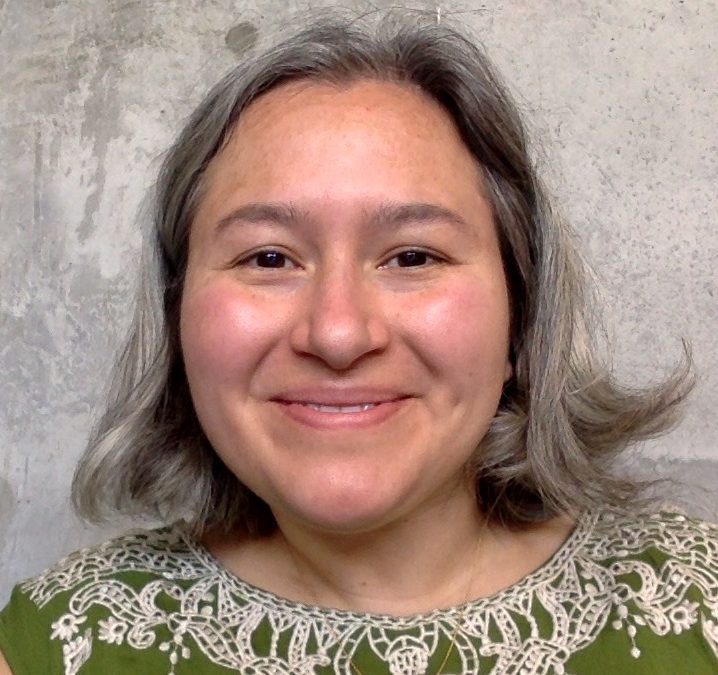This is the fourth interview in a series highlighting the people behind East Bay for Everyone. We took a break for election season, but now we’re back with more!
What’s your name and pronouns? Adriana Valencia, she/her

What is your housing story? We’re lucky in that we’re housing-secure: I live in a glorious (sarcasm intended) 506 square foot apartment with my husband and son. We bought it a little over 4 years ago.
I moved here for grad school twenty years ago. I first lived in a dilapidated house in Rockridge that had 14 people at one point. It was in bad condition: the landlord never fixed anything, the floor in the utility room was rotted to the point of sponginess.
I left the Bay Area for a few years and then came back to finish grad school.
I managed to save money for a downpayment by doing a work exchange for housing on campus. Then my husband and I lived in a tiny studio. We considered moving across the hall into a one-bedroom but rent was nearly double what we were paying and it wasn’t that much bigger.
Then we bought this place. It’s 4 units, less than 2300 square feet in the whole building, so the average unit size is TINY. The biggest apartment is a 2 bedroom upstairs. We rent that one to one of my friends and his friends.
The first time we looked for a place to buy was in 2012. We put in an offer on a place in a liquefaction zone, and they accepted it. Only then did they disclose that it needed a new foundation, so we backed out. That was the first place we had even seen. Then we kept looking and looking and the market had gone wild.
We started looking at multi unit buildings; the financing for duplexes to fourplexes is about the same as for an SFR, and it’s beneficial from a tax perspective. This place was in pretty bad shape and we were the only offer. The owners needed to sell it.
We closed on it nearly a year after we were initially supposed to. We had to pay an additional several thousand on the last day that went to pay the interest that had accumulated on all the money the sellers owed various government agencies. The reason they had to sell this place is because they hadn’t been paying any payroll taxes or business taxes or anything. Every penny from the sale of this house went to some sort of creditor or tax agency.
What do you pay now? That’s an interesting question. We get rent, but rent doesn’t cover the expenses of running the building. Garbage is more than $1 a day per apartment. It’s about $7000 a year for insurance including earthquake, homeowner, and liability. There are also property taxes and business taxes. We have lots of maintenance and repair expenses, even though we spend a lot less on that now than we did when we first bought the property, since we caught up on years of deferred maintenance and repairs the first year we were here. The roof is near the end of its life cycle so we’ll need a new one in the next couple of years. We had the foundation redone two years ago. It was basically crumbled seashells.
How did you hear about EBFE? A neighbor asked me if I’d heard about the proposal for a tower at MacArthur BART. Just as I was about to comment that that sounded like a fantastic idea, she exclaimed that, “we need to stop it!” At that point, I decided to go to every single meeting about it to speak favor of it, since I knew that she would be rallying a bunch of retirees with a lot of spare time. So I went to meetings to speak in favor of high-density housing near transit and there were a lot of other supporters there. I started talking to them and that’s how I heard about East Bay for Everyone.
What brought you to join EBFE? It was all the MacArthur tower stuff. I kept seeing the same people and they consistently advocated for housing. It was East Bay Forward at the time.
What do you contribute? I give a good amount of time in copyediting and letter writing.
What do you do outside of EBFE? My day job is at a company that makes online games. I get our apps translated and maintained for six languages. I like to cook and I like to ride my bike although I don’t ride my bike as often as I like or should. I like to kayak. I also don’t do that as often as I’d like.
What’s your favorite thing about EBFE as an organization? It’s inclusive and seeking to be more inclusive. There are a lot of people who are much more politically savvy than I am–people who seem to know who Oakland city councilmember staffers are and what they’re like and people seem to know who has certain views. EBFErs also seem to not have big egos, if either I or someone else suggests copy changes no one ever gets defensive. There’s a sense of common purpose and interest in getting stuff done.
What’s your least favorite thing about EBFE as an organization? Sometimes there’s so much going on that it can be overwhelming. I feel that as a non-newcomer.
What do you think about EBFE outside of Oakland? I think East Bay for Everyone outside of Oakland is a good thing, but I don’t know that much about it because I’m very much in Oakland and my advocacy tends to be hyper-local.
What does an East Bay that is truly for Everyone look like? A truly inclusive East Bay has housing at a broad range of price points in all areas, so it’s not ghettoized. It has local businesses as well as chain businesses, it has robust rapid transit, it has excellent access to education and is welcoming to new people. One of the things that drives me nuts is posters that declare that “we’re a sanctuary city”; we really aren’t if people can’t afford to live here at all.
My ideal density: every main street within a half mile of a BART station should be at least 5-7 stories tall.
Anything else? I like East Bay for Everyone and I hope it gets bigger and better.
